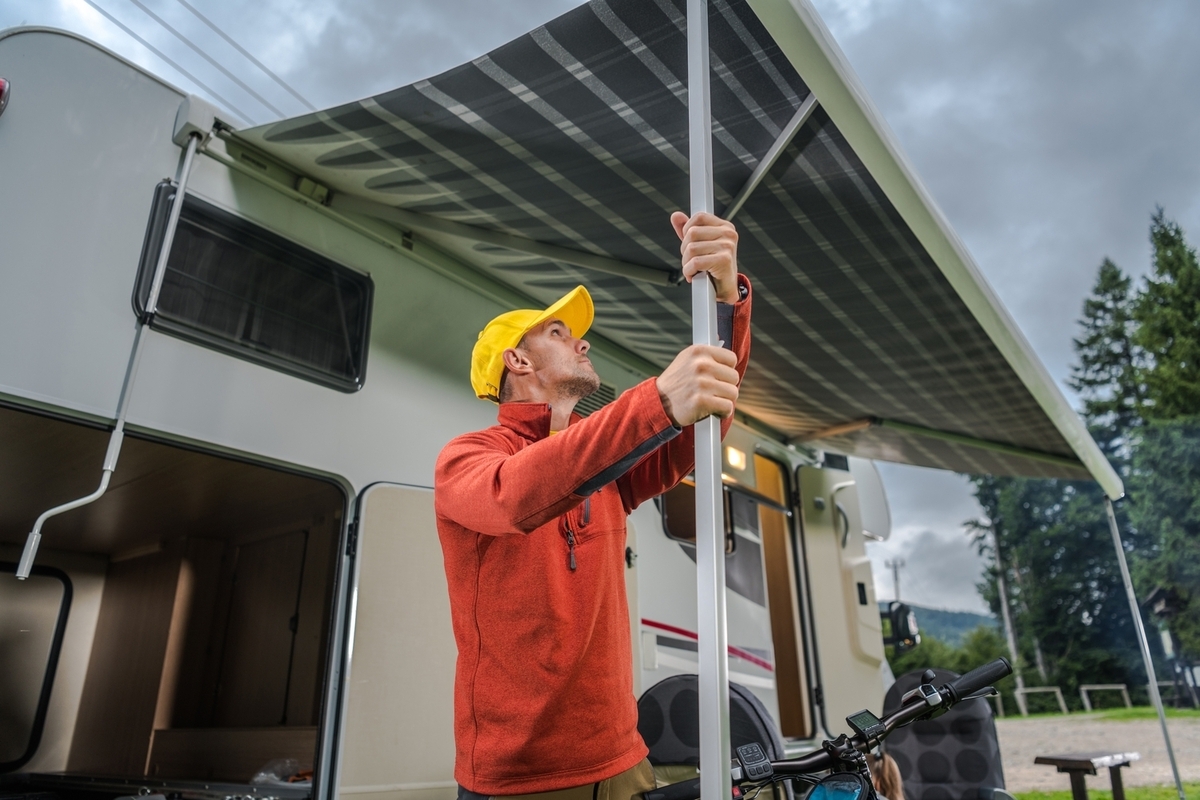The Comprehensive Guide to Retractable Awnings
In recent years, retractable awnings have gained popularity among homeowners and businesses alike for their flexibility and practicality. These shade devices, which can be extended or retracted as needed, provide numerous benefits including protection from the sun, enhanced outdoor living spaces, and energy savings. In this detailed guide, we will explore the various aspects of retractable awnings, including their types, benefits, installation, maintenance, and the considerations to keep in mind when choosing the right one for your needs.

Understanding Retractable Awnings
What Are Retractable Awnings?
Retractable awnings are versatile exterior fixtures that can be extended to provide shade or retracted to allow more sunlight. Unlike fixed awnings, they offer the flexibility to adapt to changing weather conditions or user preferences. They come in various shapes, sizes, and materials, making them suitable for different types of settings—whether it be residential homes, commercial establishments, or recreational areas.
Types of Retractable Awnings
There are primarily two categories of retractable awnings:
1. Manual Retractable Awnings: These are operated by a hand crank or pull string. They are often more affordable than their motorized counterparts but require physical effort to expand or retract.
2. Motorized Retractable Awnings: These are powered by an electric motor, allowing for easy operation with a switch, remote control, or even a smart home system. Motorized awnings are typically more convenient and can include additional features like weather sensors.
Benefits of Retractable Awnings
Protection from the Elements
One of the main advantages of retractable awnings is their ability to protect against harmful UV rays. By providing shade, they reduce sun exposure, helping to prevent skin damage and fading of indoor furnishings. They also offer protection from light rain, allowing outdoor activities to continue uninterrupted.
Enhanced Outdoor Living Spaces
Retractable awnings can significantly enhance the usability of outdoor spaces such as patios, decks, and balconies. By providing a comfortable shaded area, they make it easier to enjoy outdoor living without the discomfort of direct sun exposure. Businesses like restaurants and cafes can also benefit from increased customer seating under these shaded areas.
Energy Savings
By blocking sunlight from entering windows and doors, retractable awnings can reduce indoor temperatures and lessen the need for air conditioning. This can lead to energy savings and lower utility bills. During colder months, retracting the awning allows more sunlight to enter, aiding in natural heating.
Installation and Maintenance
Installation Considerations
When installing a retractable awning, it is essential to consider factors such as the location, size, and type of awning that best fits your needs. Professional installation is often recommended to ensure the awning is securely mounted and functions correctly. Key steps in the installation process include:
1. Measuring the Area: Accurate measurements ensure the awning will properly cover the desired space.
2. Choosing the Mounting Surface: Awnings can be mounted on walls, roofs, or soffits. The mounting surface must be strong enough to support the weight and stress of the extended awning.
3. Selecting the Right Hardware: Use appropriate brackets, bolts, and anchors to secure the awning.
Maintenance Tips
Proper maintenance is crucial for extending the life of your retractable awning. Here are some tips:
1. Regular Cleaning: Clean the fabric periodically with mild soap and water to remove dirt, dust, and debris. Avoid using harsh chemicals that can damage the material.
2. Inspecting Mechanisms: Check the moving parts, such as the arms and motor (if applicable), for signs of wear or damage. Lubricate the joints and moving parts to ensure smooth operation.
3. Storing During Extreme Weather: Retract the awning during high winds, heavy rain, or snow to prevent damage. Some models come with built-in sensors that automatically retract the awning during unfavorable weather conditions.
Choosing the Right Retractable Awning
Material and Durability
The material of the awning fabric plays a significant role in its durability and performance. Common materials include:
1. Acrylic: Known for its resistance to fading, mildew, and UV rays. Acrylic fabrics are breathable, allowing air to pass through and keep the shaded area cool.
2. Vinyl: Waterproof and more affordable than acrylic, vinyl fabrics are suitable for rainy environments but may trap heat.
Design and Aesthetics
Choose a design that complements your property’s architecture and exterior color scheme. Retractable awnings come in various styles, including traditional, modern, and custom designs. Consider features such as:
1. Color and Pattern: Select colors and patterns that match or enhance your outdoor décor.
2. Valance Style: The valance (the decorative edge) can come in different styles, offering a tailored look to your awning.
Additional Features
Modern retractable awnings can come with several additional features such as:
1. Wind and Sun Sensors: These sensors automatically retract the awning when winds are high or extend it when the sun is intense.
2. Remote Control and Smart Home Integration: Enhance convenience with remote-controlled operation or integration with smart home systems for automated functionality.
Retractable awnings are a versatile and practical solution for enhancing outdoor living spaces and providing protection from the elements. With options ranging from manual to motorized systems, and materials like acrylic and vinyl, there is a retractable awning to suit every need and preference. Proper installation and maintenance will ensure that these investments provide comfort and aesthetic appeal for years to come.
By carefully considering the material, design, features, and professional installation, homeowners and businesses can enjoy the many benefits of retractable awnings—making outdoor spaces more enjoyable and energy-efficient.















